Smoke coming from the exhaust of the car is quite normal. After all, combustion engines produce exhaust gases and they need to go somewhere. Normally however, whatever comes from the exhaust is barely visible. If colouration occurs, this needs looking into as it could be a warning sign for imminent engine damage. In this article you can read what to observe regarding exhaust colour.
Function of the combustion engine
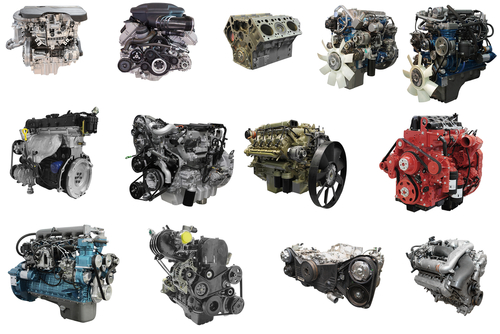 All combustion engines work according to the same principle: fuel is burned under high pressure, leading to an explosion, setting a piston in motion. This motion is captured by the car mechanics and conducted towards the drive train. It is of no importance, whether it concerns a 4-stroke petrol engine, diesel engine or Wankel engine. This doesn’t change the fundamental working principle.
All combustion engines work according to the same principle: fuel is burned under high pressure, leading to an explosion, setting a piston in motion. This motion is captured by the car mechanics and conducted towards the drive train. It is of no importance, whether it concerns a 4-stroke petrol engine, diesel engine or Wankel engine. This doesn’t change the fundamental working principle.
What belongs in the combustion chamber?
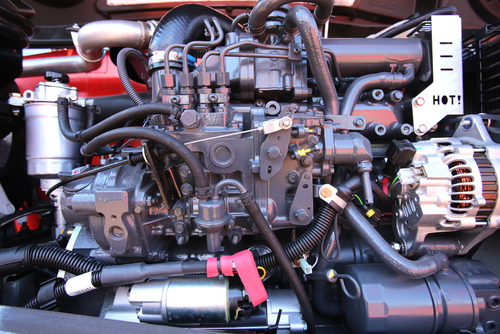 In 4-stroke petrol and diesel engines, only the air-fuel mix enters the engine, which is burned and then conducted towards the emission control. In 2-stroke engines, such as in little scooters, chain saws or lawn mowers, oil always enters the combustion chamber as well. Therefore, behind small scooters, blue smoke can be seen.
In 4-stroke petrol and diesel engines, only the air-fuel mix enters the engine, which is burned and then conducted towards the emission control. In 2-stroke engines, such as in little scooters, chain saws or lawn mowers, oil always enters the combustion chamber as well. Therefore, behind small scooters, blue smoke can be seen.
This can’t be avoided. Larger ships have 2-stroke diesel engines as well, although these don’t play a role in road traffic. Old fighter airplanes had water injection. The sudden evaporation of water was intended to boost the performance, and this functioned well. In cars this technology was never used.
In short, the following applies: air and fuel can enter the combustion engine, i.e. sprayed petrol, car gas or diesel. Anything else does not belong in the combustion chamber. Diesel control systems partly use the combustion chamber for burning soot particles. This takes place by way of the EGR valve of the suction tract. This is purposely constructed as such and has no influence on the exhaust colour.
Warning exhaust colour
For the mainly colourless exhaust, a light greyish white colour is normal. If the smoke gets any more visible, this should be understood as a warning signal. Typical exhaust colour changes:
| white: the emission contains water |
| black: the engine’s combustion is too rich |
| blue: oil is entering the combustion chamber |
Exhaust colour – white for humidity
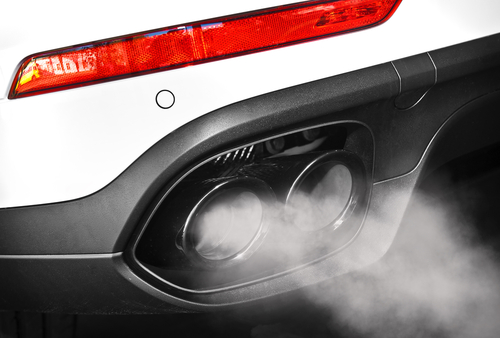 White exhaust colour always indicates high humidity. Before you start panicking, assess the situation first. The thick, white billowing clouds of smoke and vapour occur in any car in winter. When parking the car, leaving it standing a few hours in the cold, this effect is natural. The exhaust has attracted condensation from the air during cooling. One litre of water generates 1650 litres of vapour, and therefore the characteristic cold start performance is a logic consequence: even a few centilitres of water is enough for visible vapour development. The hot exhaust dries the exhaust system very quickly and the white damp soon disappears.
White exhaust colour always indicates high humidity. Before you start panicking, assess the situation first. The thick, white billowing clouds of smoke and vapour occur in any car in winter. When parking the car, leaving it standing a few hours in the cold, this effect is natural. The exhaust has attracted condensation from the air during cooling. One litre of water generates 1650 litres of vapour, and therefore the characteristic cold start performance is a logic consequence: even a few centilitres of water is enough for visible vapour development. The hot exhaust dries the exhaust system very quickly and the white damp soon disappears.
If the exhaust remains white during driving, the situation deserves closer inspection. The only way, in which water can get into the combustion chamber, is by way of the cooling system. The cooling system constantly pumps coolant through the engine, consisting of clear water and antifreeze. The point where combustion chambers and cooling system are close, is the cylinder head gasket. If this burns, water can penetrate into the combustion chamber. In that case, engine pressure penetrates the cooling system as well. This can be very clearly identified:
| 1. Switch off the engine 2. Check pressure on the water hose 3. Allow the engine to cool down 4. Open the cap of the expansion tank or radiator 5. Add coolant 6. Run the engine with opened expansion tank or radiator 7. Observe the state of the water |
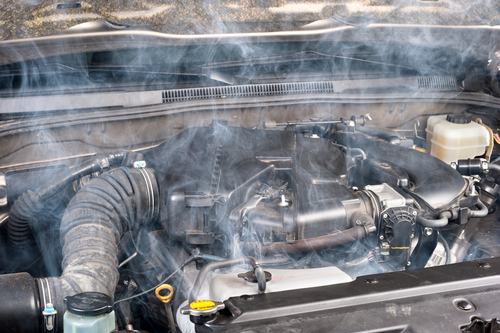 A hot engine always constitutes a risk of burning. Therefore never work in a hot engine. When switching off the engine, softly pinch in the thickest hose of the cooling system. If you feel a clear resistance, this is a strong indication of pressure in the cooling system. This pressure should be vented. Therefore, allow the engine to cool down. The cap of the expansion tank or radiator must be opened in two steps. Twisting it one quarter will vent excess pressure. Only when it no longer sizzles or bubbles under the cap, you can remove it completely.
A hot engine always constitutes a risk of burning. Therefore never work in a hot engine. When switching off the engine, softly pinch in the thickest hose of the cooling system. If you feel a clear resistance, this is a strong indication of pressure in the cooling system. This pressure should be vented. Therefore, allow the engine to cool down. The cap of the expansion tank or radiator must be opened in two steps. Twisting it one quarter will vent excess pressure. Only when it no longer sizzles or bubbles under the cap, you can remove it completely.
Run the motor after adding sufficient coolant. Look in the expansion tank or radiator. If there are bubbles forming, the cylinder head is clearly damaged. Replacement is the only option.
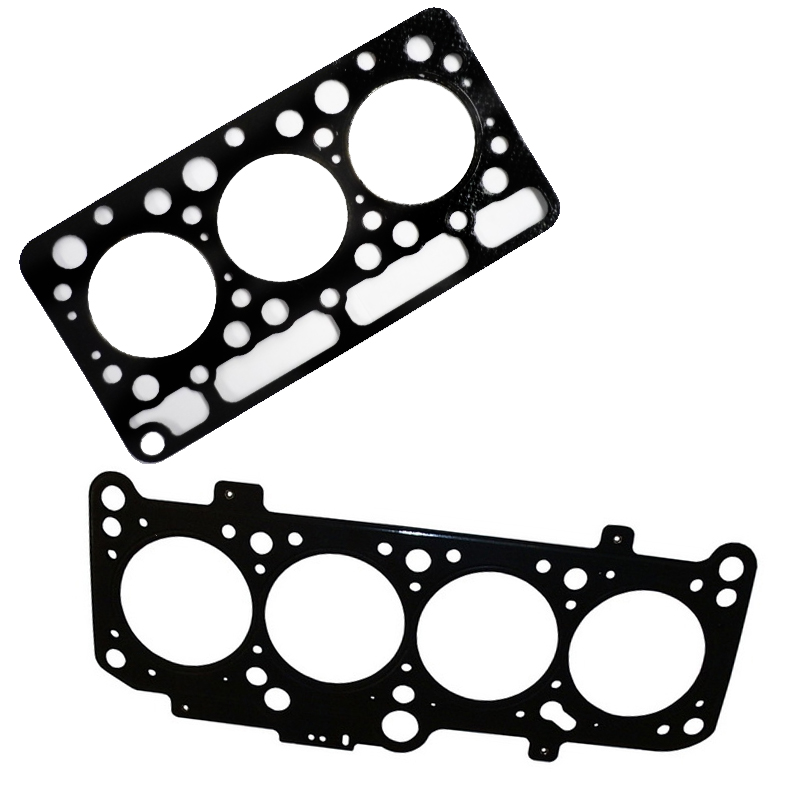
Cylinder Head Gasketsup to 50% cheaperBuy online ⇒ |
Exhaust colour black – for faulty fuel mix
 Black exhaust colour is an indication of the combustion being too rich. The fuel does not burn up completely. Part of the hydrocarbons “carbonise” and appear in the exhaust as soot. Generally, electronic malfunctions are the cause. The O2 sensor is just as often the cause as defective spark plugs. The ignition can be wrongly adjusted. In any case, the garage needs to shed light on this. In case of black exhaust you have the best chance for a cheap repair.
Black exhaust colour is an indication of the combustion being too rich. The fuel does not burn up completely. Part of the hydrocarbons “carbonise” and appear in the exhaust as soot. Generally, electronic malfunctions are the cause. The O2 sensor is just as often the cause as defective spark plugs. The ignition can be wrongly adjusted. In any case, the garage needs to shed light on this. In case of black exhaust you have the best chance for a cheap repair.

Exhaust colour blue – for oil
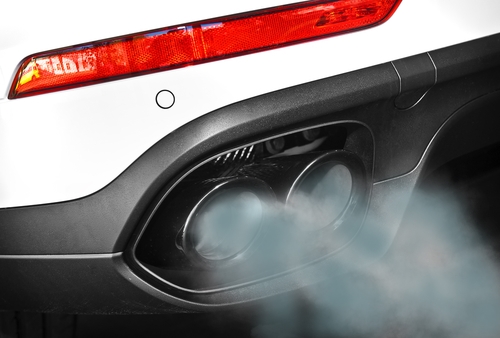 Blue exhaust colour is a clear signal of oil entering the combustion chamber. Many causes are possible, which are not easily determined.
Blue exhaust colour is a clear signal of oil entering the combustion chamber. Many causes are possible, which are not easily determined.
Possible causes are:
| – too much oil added – piston ring damaged – cylinder head gasket damaged – valve stem seal damaged |
If too much oil has been added, the pressure in the oil circulation increases. The oil is pressed past the piston into the combustion chamber. There, it is burned, causing the blue exhaust. The first step in case of blue exhaust is checking the oil level. If it is above maximum, you have found the cause. The oil change according to specification of the manager is the right approach.
A reason for an oil overdose is the wrong interpretation of the oil level. If an engine is warm, the engine oil is spread throughout the engine. The oil dipstick is calibrated to give the right information only when the engine is cold. Therefore, checking the oil right after switching off the engine may give an impression that there is too little oil in the engine. Always wait 3 – 5 minutes before checking the oil level.
 The piston rings seal the pistons from the cylinder wall. If these are worn, oil can enter the combustion chamber, burning there and causing the blue exhaust. Defective piston rings are determined by a compression test. This is very cheap and can be conducted in the garage. The screw thread of a spark plug is screwed in a testing device and the engine is run. The internal pressure in the cylinder provides information if the piston ring is damaged. Its repair is very expensive, as the engine must be disassembled.
The piston rings seal the pistons from the cylinder wall. If these are worn, oil can enter the combustion chamber, burning there and causing the blue exhaust. Defective piston rings are determined by a compression test. This is very cheap and can be conducted in the garage. The screw thread of a spark plug is screwed in a testing device and the engine is run. The internal pressure in the cylinder provides information if the piston ring is damaged. Its repair is very expensive, as the engine must be disassembled.

 If compression and oil level are decent, but the exhaust is blue, the next suspicion falls on the cylinder head gasket. Same applies here as well: an opening between the combustion chamber and oil circulation works in both directions. If the oil shows brownish-white foam, the cylinder head gasket is undoubtedly damaged. It might turn out that the coolant has become blackish-brown from the oil.
If compression and oil level are decent, but the exhaust is blue, the next suspicion falls on the cylinder head gasket. Same applies here as well: an opening between the combustion chamber and oil circulation works in both directions. If the oil shows brownish-white foam, the cylinder head gasket is undoubtedly damaged. It might turn out that the coolant has become blackish-brown from the oil.
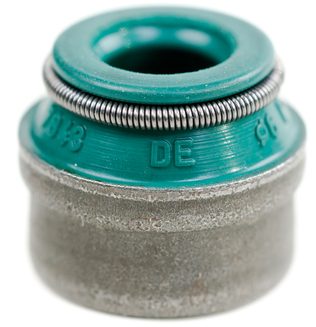 If oil level, compression and cylinder head gasket are decent, the valve stem seals are the only possible cause left. These are gasket rings, sealing the valves. They prevent lubrication oil from entering the combustion chamber.
If oil level, compression and cylinder head gasket are decent, the valve stem seals are the only possible cause left. These are gasket rings, sealing the valves. They prevent lubrication oil from entering the combustion chamber.
DIY replacement of valve stem seals is only possible by removing the cylinder head. Garages can keep the valves in their place with help of pressurised air. Then, valve stem seals can be replaced without the need for removing the cylinder head. This solution might turn out to be cheaper than a DIY attempt.
Foto: Chekunov Aleksandr, Vereshchagin Dmitry, Rasulov, Ruslan Kudrin, J. Lekavicius, wittaya changkaew4, Joe Belanger, Dima Sidelnikov / shutterstock.com

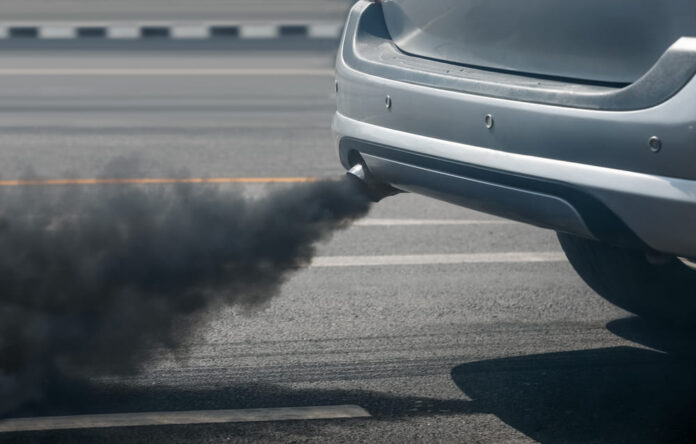


 (8 votes, average: 3.50 out of 5)
(8 votes, average: 3.50 out of 5)







